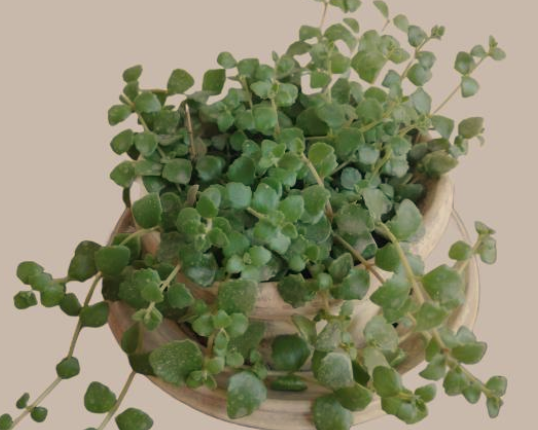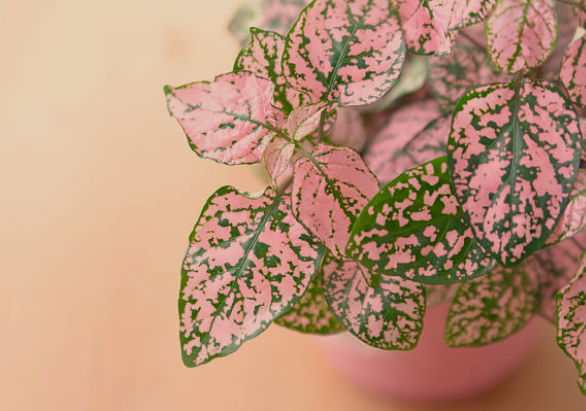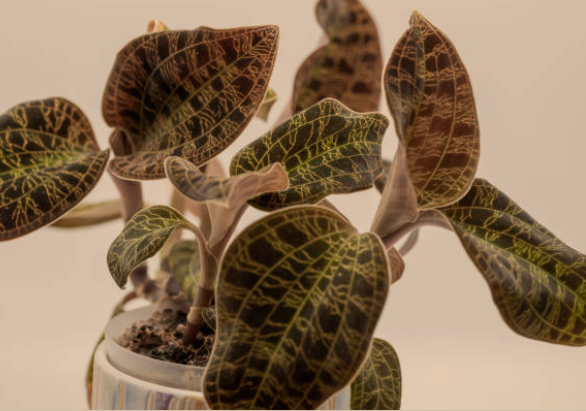Looking at my indoor garden, I remember the happiness compact flowers bring.
Growing plants indoors is a calming hobby.
Using a terrarium is a smart way to do it.
A terrarium is a closed or partly closed container.
It’s perfect for plants that love humid air.
It’s great for those who want to enjoy nature indoors without a lot of work.
Using indoor plants in a terrarium adds greenery to your home.
It also purifies the air and brings peace.
In this blog post, we will look at some top terrarium flowers.
They’re easy to care for and look amazing.
The Magic of Indoor Terrariums
Indoor terrariums are special because they can grow well with little care.
These tiny gardens in glass containers have won the hearts of many plant lovers.
What Makes Terrariums Special
Terrariums are self-sustaining ecosystems that need very little care.
They keep a humid environment, which helps plants grow with less water.
This makes them great for people who are busy or new to indoor plants.
Benefits of Growing Flowers in Terrariums
Growing low-maintenance flowers in terrariums has many advantages.
They can grow well in low-light conditions, perfect for rooms with little sunlight.
Also, terrariums save water because they recycle moisture.
Learning about indoor terrariums lets you enjoy nature indoors with little effort.
They are a great choice for terrarium care beginners.
Terrarium Environments
To grow beautiful flowers in a terrarium, you need to know the environment you’re creating.
A terrarium is a self-sustaining ecosystem.
It needs careful consideration of several factors to thrive.
Closed vs. Open Terrariums
The type of terrarium you choose greatly affects the environment inside.
Closed terrariums are humid and stable, perfect for plants that love moist conditions.
Open terrariums have better air circulation, ideal for plants that prefer drier air.
- Closed terrariums are great for plants like ferns and mosses.
- Open terrariums are better for succulents and cacti.
Ideal Growing Conditions
For any terrarium, maintaining the right conditions is key. This includes:
- Keeping a consistent temperature of 65-75°F (18-24°C).
- Providing the right amount of light; most flowering plants need bright, indirect light.
- Ensuring high humidity, especially in closed terrariums, to prevent water stress.
What to Look for in Terrarium Flowers
To make a terrarium bloom, knowing what flowers to pick is key.
When choosing flowering plants for your terrarium, several things matter.
These ensure they do well in their closed space.
Size and Growth Habits
The size and how plants grow are very important.
You want compact flowers that won’t grow too big too fast. 4Miniature orchids or small African Violets are great. They stay small and don’t need much cutting back.
Light and Moisture Requirements
It’s crucial to know what light and moisture your flowers need.
Some plants love bright light, while others prefer the shade. Moisture needs can also vary a lot.
For example, ferns and mosses love wetter places, but succulents like it drier.
Picking plants that need similar things makes caring for them easier.
Compatibility with Other Plants
It’s also important to think about how flowers get along with other plants.
Some plants can stop others from growing.
For instance, planting low-maintenance flowers like Baby’s Tears with plants that need more care can upset the balance.
Finding plants that get along well helps keep your terrarium in harmony.
| Flower Type | Light Requirement | Moisture Requirement | Growth Habit |
|---|---|---|---|
| African Violets | Low to Medium | Medium | Compact |
| Miniature Orchids | Medium to High | Medium | Compact |
| Baby’s Tears | Low | High | Spreading |
Top 7 Terrarium Flowers That Thrive Indoors: Complete Guide
As an indoor gardening enthusiast, I’m excited to share with you my top picks for terrarium flowers.
These flowers will add elegance and vibrancy to your indoor space.
Selection Criteria
I looked at several key factors when choosing the best terrarium flowers.
I considered size and growth habits, light and moisture requirements, and compatibility with other plants.
These factors helped me pick the top 7 terrarium flowers that do well indoors.
Comprehensive Comparison Table
Here’s a detailed comparison of the 7 terrarium flowers. It highlights their unique characteristics:
| Terrarium Flower |
|---|
Light Requirements
Watering Needs
Growth Rate
Difficulty Level
Special Features
| African Violets | Low to Medium | Moderate | Slow | Easy | Colorful, Compact |
| Miniature Orchids | Medium to High | Moderate to High | Slow | Moderate | Exotic, Elegant |
| Nerve Plants (Fittonia) | Low to Medium | High | Fast | Moderate | Stunning Veined Foliage |
| Baby’s Tears | Low to Medium | High | Fast | Easy | Delicate, Cascading |
| Polka Dot Plants | Medium | Moderate | Fast | Easy | Vibrant Spotted Foliage |
| Moss Flowers | Low | High | Slow | Moderate | Lush, Miniature Landscapes |
| Miniature Sinningias | Medium to High | Moderate | Slow | Moderate | Tiny, Flowering Gems |
1) African Violets: Colorful Compact Beauties

African Violets are a standout in terrariums for their small, delicate beauty.
They add a splash of color to indoor spaces.
Plus, they’re easy to care for and do well in terrariums.
Growing Requirements
African Violets need the right conditions to grow well.
They like bright, indirect light and consistent moisture.
Use a potting mix that drains well to avoid root rot.
Here are some important growing tips:
- Temperature between 65-75°F (18-24°C)
- High humidity, typically above 50%
- Watering from the bottom to prevent leaf spots
Varieties to Consider
There are many African Violet varieties, each with its charm. Some favorites include:
- ‘Rhapsody in Blue’ – Known for its deep blue flowers
- ‘Fantasia’ – Features vibrant, multi-colored blooms
- ‘Chic’ – Offers delicate, pale pink flowers
Common Issues and Solutions
African Violets are generally easy to care for, but can face some challenges.
Issues like overwatering, underwatering, and pests like aphids and spider mites can occur.
To solve these problems, water correctly, keep air circulating, and check your plants often for pests.
2) Miniature Orchids: Exotic Elegance in Small Packages

Miniature orchids add exotic elegance to terrariums.
They captivate with their delicate beauty and intricate details.
These small plants are great for adding sophistication to indoor gardens.
Best Varieties for Terrariums
When picking orchids for your terrarium, consider these varieties:
1. Phalaenopsis: Known as moth orchids, they have long-lasting blooms and are easy to care for.
2. Dendrobium: Their cascading stems and vibrant flowers add drama to terrariums.
3. Oncidium: Also called “dancing ladies,” they have delicate, intricate blooms that are a joy to see.
Care Tips for Thriving Orchids
To keep your orchids healthy, follow these care tips:
1. Lighting: Most orchids need bright, indirect light. Direct sunlight can be too strong, so use a sheer curtain to filter it.
2. Watering: Water carefully to avoid overwatering, which can kill them. Let the potting medium dry a bit before watering again.
3. Humidity: Keep the humidity level between 40-70% to help them grow well.
Creating the Perfect Orchid Microclimate
To create the best environment for your orchids, consider these factors:
1. Temperature: Most orchids like daytime temperatures of 65-75°F (18-24°C) and cooler nights.
2. Air Circulation: Good air flow helps prevent fungal diseases.
3. Potting Mix: Use a potting mix made for orchids, not regular potting soil.
3) Nerve Plants (Fittonia): Stunning Veined Foliage

Nerve Plants, also known as Fittonia, are easy to care for.
They add elegance to any room. Their veined leaves are perfect for terrariums, making them a beautiful sight.
Color Varieties and Patterns
Fittonia plants have striking leaves in many colors and patterns.
The veins can be silver, gold, or white against green leaves.
Some leaves have intricate patterns, while others are more subtle.
Ideal Growing Conditions
Fittonia plants need high humidity and moderate light.
They prefer soil that drains well and should be watered carefully.
In terrariums, keep the humidity high and the light filtered.
Propagation Methods
You can grow Fittonia from leaf cuttings or division.
For leaf cuttings, take a 2-3 inch stem with leaves.
Remove lower leaves and plant in moist soil.
Keep it moist and humid. Division works too, by separating the roots and replanting.
By following these tips, you can grow Nerve Plants in your terrarium.
Enjoy their beautiful leaves and add elegance to your home.
4) Baby’s Tears: Delicate Cascading Greenery

Baby’s Tears adds charm to any terrarium with its cascading effect.
It’s soothing and visually appealing.
The plant has delicate, trailing stems that create a lush display.
Growth Habits and Care
Baby’s Tears loves humid places with moderate to low light.
To care for it, keep the terrarium humid and out of direct sunlight.
Watering must be done carefully to avoid too wet or dry soil.
Key Care Tips:
- Maintain high humidity within the terrarium.
- Avoid direct sunlight to prevent leaf scorch.
- Water carefully to maintain moist but not waterlogged soil.
| Care Aspect | Recommendation |
|---|---|
| Lighting | Moderate to Low |
| Watering | Maintain moist soil |
| Humidity | High |
Pairing with Other Terrarium Plants
Baby’s Tears pairs well with other terrarium plants for a diverse landscape.
Try it with ferns or flowering plants like African Violets.
These plants add contrast in texture and color.
Choose plants that need similar care to make maintenance easier.
Plants that do well in low light and humid conditions are great with Baby’s Tears.
| Companion Plant | Why It Works |
|---|---|
| Ferns | Contrasting texture and similar care needs |
| African Violets | Colorful blooms and compatible growing conditions |
| Miniature Orchids | Elegant appearance and similar humidity requirements |
5) Polka Dot Plants: Vibrant Spotted Foliage

Polka dot plants, also known as Hypoestes phyllostachya, are a favorite for indoor gardens and terrariums.
Their unique, spotted leaves make them stand out.
They are easy to care for and brighten up any room.
Color Variations
These plants come in many colors and patterns, making them eye-catching.
You will often see them with pink, white, and green spots.
Some may even have red or purple leaves, adding to their charm.
The colors depend on the plant type and how it’s grown.
Maintenance and Pruning
For your polka dot plants to do well, they need the right care.
They like soil that drains well and prefer shade.
Water them just right, as too much water can harm them.
Pruning helps them stay bushy and encourages new growth.
Cut back any long stems and trim overgrown branches.
Troubleshooting Common Issues
Polka dot plants can face problems like too much or too little water, and pests.
Watch out for spider mites, mealybugs, and scale.
Check your plants often and treat any pests quickly.
Also, make sure they have good air flow to avoid fungal diseases.
6) Mosses Flowers: Creating Lush Miniature Landscapes

Moss flowers add beauty to terrariums, making them lush and low-maintenance.
As a terrarium lover, I find moss flowers unique and charming.
Types of Flowering Mosses
Several flowering mosses do well in terrariums.
Popular ones include Sphagnum moss, Hypnum moss, and Polytrichum moss.
Each has its own look and growth style. For example, Sphagnum moss holds moisture well, perfect for terrariums.
Establishing and Maintaining Moss
To grow moss, pick the right soil and keep it humid.
Mist it often to keep it alive. Most mosses like indirect light.
Also, remove dead moss to keep things healthy.
Creating Moss Focal Points
To make moss stand out, arrange it nicely.
Use different mosses to make patterns or designs. Mixing Sphagnum and Hypnum moss can make a stunning landscape.
| Type of Moss | Light Requirement | Watering Needs |
|---|---|---|
| Sphagnum Moss | Indirect Light | High Humidity |
| Hypnum Moss | Low to Medium Light | Regular Misting |
| Polytrichum Moss | Medium to Bright Light | Moderate Watering |
Adding moss flowers to your terrarium makes it a beautiful miniature world.
It’s a great way to enjoy indoor gardening.
7) Miniature Sinningias: Tiny Flowering Gems

Miniature Sinningias are a delightful addition to any indoor garden or terrarium.
They offer a variety of tiny flowering gems. These can add beauty and charm to your space.
Popular Varieties for Terrariums
When selecting Sinningia varieties for your terrarium, consider these popular options:
- Sinningia speciosa: Known for its vibrant, funnel-shaped flowers that bloom in shades of pink, white, and bi-colored.
- Sinningia leucotricha: Features white flowers with yellow throats, adding a touch of elegance to your terrarium.
- Sinningia tubiflora: Displays tubular flowers in shades of pink and white, making it a charming addition to your miniature garden.
Care Requirements
To ensure the health and longevity of your Miniature Sinningias, follow these care guidelines:
- Provide bright, indirect light, as direct sunlight can be too intense.
- Maintain a consistent temperature between 65°F to 75°F (18°C to 24°C), avoiding extreme temperatures.
- Water carefully, allowing the soil to dry slightly between waterings, as overwatering can lead to root rot.
Seasonal Blooming Tips
To encourage seasonal blooming in your Miniature Sinningias:
- Most Sinningia species bloom in the spring and summer months, so plan accordingly.
- Some varieties may produce flowers sporadically throughout the growing season, so be prepared to enjoy multiple blooming periods.
Creating Your Own Flowering Terrarium: Step-by-Step Guide
In this guide, I will show you how to make a stunning flowering terrarium.
You will need a few simple materials and some basic knowledge.
This way, you can create a beautiful, self-sustaining environment that adds joy and peace to your home.
Essential Supplies
To begin, gather a few essential items.
You will need a clear glass container, small plants, soil, pebbles, charcoal, and a spray bottle.
Choose plants that do well in low light and have similar watering needs for a balanced environment.
- Clear glass container
- Small plants (e.g., African Violets, Miniature Orchids)
- Soil
- Pebbles
- Charcoal
- Spray bottle
Layering Techniques
Layering is key in terrarium creation. Start with pebbles at the bottom for drainage.
Next, add a thin layer of charcoal to stop mold.
Then, put in soil, leaving room for roots.
Proper layering helps roots grow well and prevents waterlogging.
- Add pebbles for drainage
- Add a thin layer of charcoal
- Add soil, leaving space for roots
Planting and Arranging
Now, prepare your container for planting. Carefully remove plants from their pots to avoid damaging roots.
Plant them in the soil, leaving enough space for growth.
Arrange the plants to look good.
Maintenance Schedule
To keep your terrarium alive, follow a regular care routine. Check moisture levels often and water lightly.
Don’t overwater, as it can cause mold and root rot.
Also, rotate the terrarium every month to ensure even growth and prevent leaning.
- Check moisture levels weekly
- Water sparingly
- Rotate the terrarium monthly
Conclusion
Growing terrarium flowers is a rewarding experience.
It lets me bring nature’s beauty indoors.
With the right flowers and care, I can create a stunning miniature garden.
Flowers like African Violets, Miniature Orchids, and Polka Dot Plants add color and texture.
They make indoor spaces more interesting. By knowing their needs, I can create the perfect environment for them.
Creating a terrarium is not just about looks.
It’s also a chance to try out different plants and decorations.
With the right flowers and care, my terrarium will thrive for years.
FAQ
What are the best flowers for a terrarium?
For a terrarium, choose flowers that like low light and grow small. African Violets, Miniature Orchids, and Polka Dot Plants are great options.
How often should I water my terrarium flowers?
Watering needs depend on the plants and terrarium environment. Water sparingly to avoid mold and root rot.
Can I use regular potting soil in my terrarium?
No, regular potting soil is too dense for terrariums. Use a well-draining terrarium soil to prevent waterlogged soil and root rot.
How much light do terrarium flowers need?
Most terrarium flowers like bright, indirect light. But some, like African Violets and Miniature Orchids, can handle low light. Check the light needs of your plants.
Can I mix different types of plants in a single terrarium?
Yes, but pick plants that like similar conditions. Mixing plants that need high humidity with those that prefer dry conditions can be tough.
How do I maintain humidity in my terrarium?
To keep humidity up, cover the terrarium or use a humidifier nearby. But don’t overdo it, as too much humidity can cause mold and fungus.
What is the ideal temperature for terrarium flowers?
Most terrarium flowers like daytime temperatures of 65-75°F (18-24°C) and nighttime temperatures of 55-65°F (13-18°C). Check the temperature needs of your plants.
How often should I fertilize my terrarium flowers?
Feed your terrarium flowers with a balanced fertilizer during spring and summer. Use half the recommended strength to avoid harming the roots.



